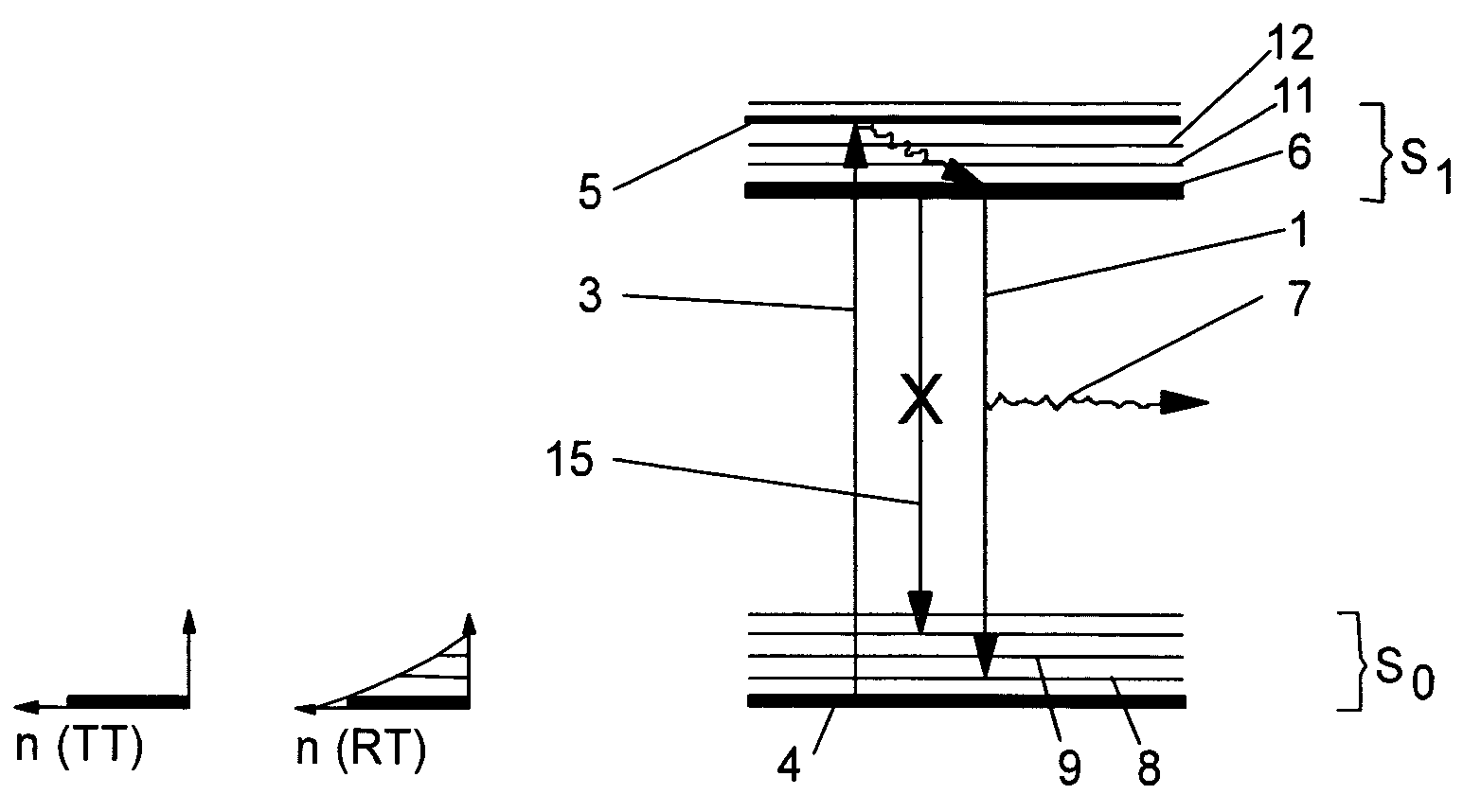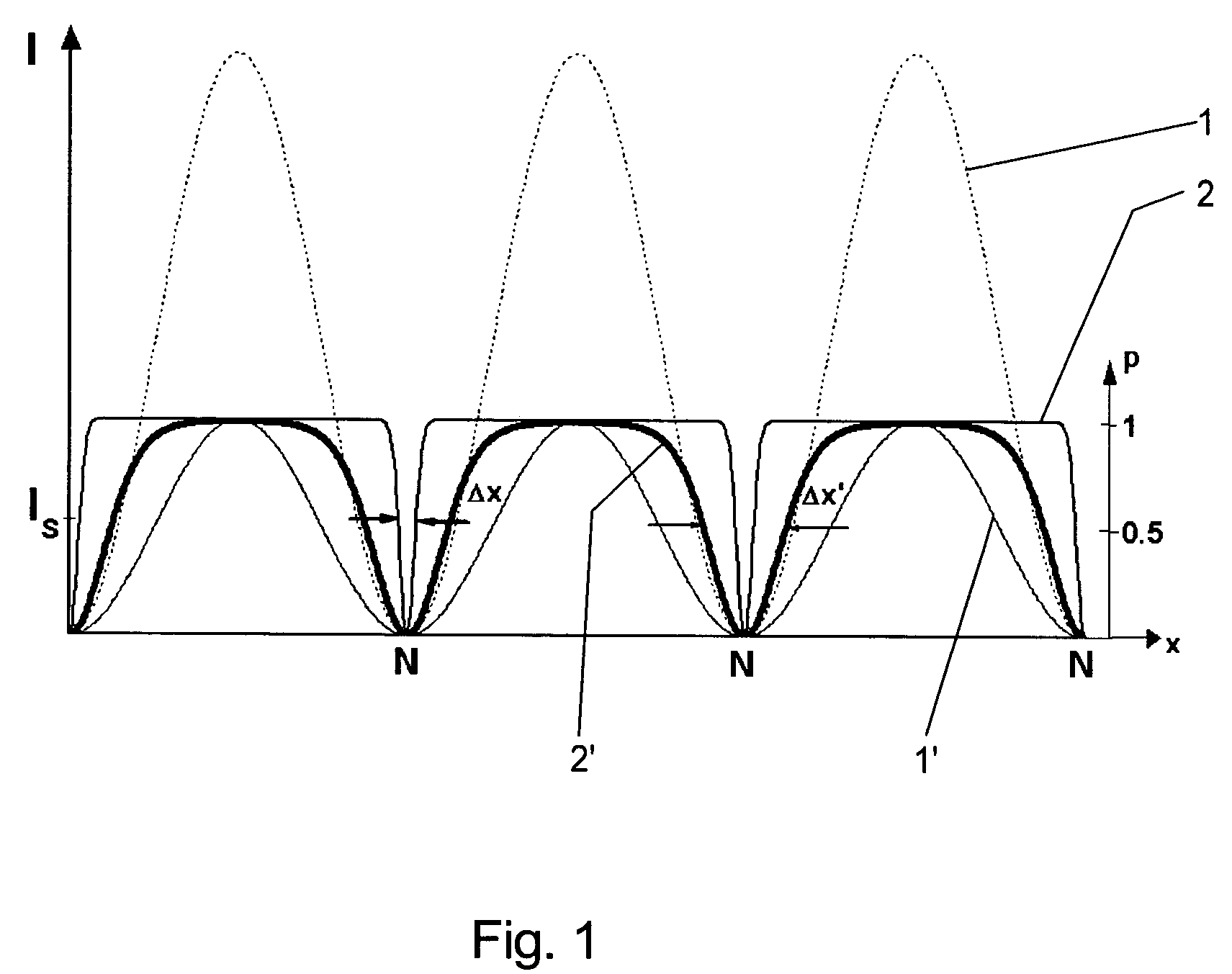Method of exciting molecules out of a first state into a second states using an optical signal
a technology of optical signal and sample, applied in the direction of optical radiation measurement, fluorescence/phosphorescence, spectrophotometry/monochromator, etc., can solve the problems of undesired chemical reactions, sample chemical modification, interference with the desired de-excitation
- Summary
- Abstract
- Description
- Claims
- Application Information
AI Technical Summary
Benefits of technology
Problems solved by technology
Method used
Image
Examples
Embodiment Construction
[0017]In the new method the sample is cooled down below at least 5° C. before the optical signal is applied. Already by cooling down below 5° C. a relevant immobilization of the single components of the sample is achieved as compared to a sample at room temperature. Particularly, toxic agents which could be transformed into radicals by high intensities of the optical signal, are no longer mobile within the sample to such an extent that they could cause damages in a bigger spatial area. Even with high intensities of the optical signal any damages by toxic agents remain local. Thus, cooling the sample below 5° C. already shows a clear effect reducing the bleaching under the influence of the optical signal, particularly with water containing samples, i.e. with all biological samples. Below 5° C. the dipoles of the water molecules start to align. The motility of the water molecules and of any substance dissolved in the water decreases. To the same extent to which the tendency of the sam...
PUM
| Property | Measurement | Unit |
|---|---|---|
| temperature | aaaaa | aaaaa |
| temperature | aaaaa | aaaaa |
| temperature | aaaaa | aaaaa |
Abstract
Description
Claims
Application Information
 Login to View More
Login to View More - R&D
- Intellectual Property
- Life Sciences
- Materials
- Tech Scout
- Unparalleled Data Quality
- Higher Quality Content
- 60% Fewer Hallucinations
Browse by: Latest US Patents, China's latest patents, Technical Efficacy Thesaurus, Application Domain, Technology Topic, Popular Technical Reports.
© 2025 PatSnap. All rights reserved.Legal|Privacy policy|Modern Slavery Act Transparency Statement|Sitemap|About US| Contact US: help@patsnap.com



